Deutzia Plant - How to Care for Deutzia, Varieties, Pruning, Problems
Deutzia is one of the most popular ornamental shrubs encountered in many gardens. It grows quite fast, and has low requirements as for growing location, soil and care. Are you wondering whether this plant is good for your garden? Take a look and find out.
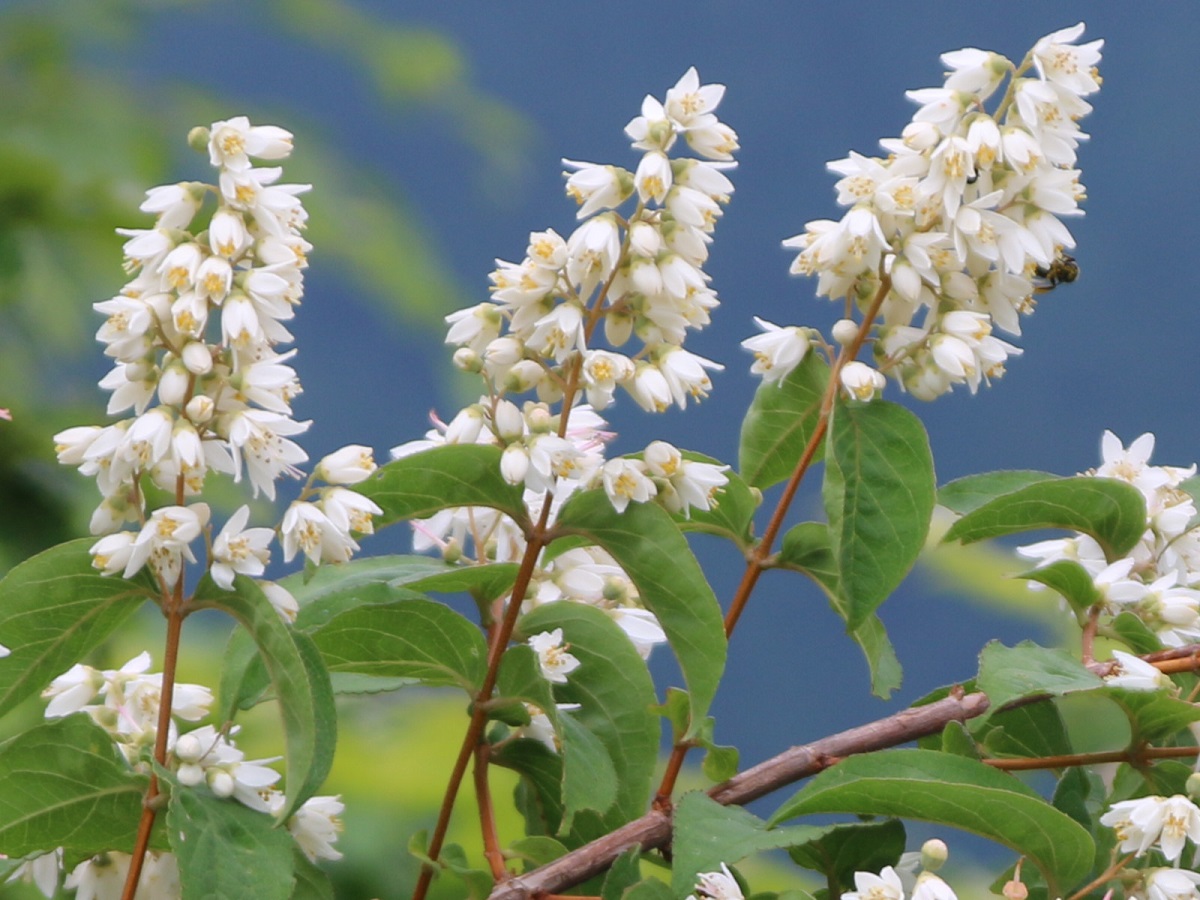
Deutzia – what kind of plant is it and what does it look like?
Deutzia (Deutzia) belongs to the hydrangeaceae family and originates in Asia, more specifically Japan, where it grows naturally. It’s also cultivated in gardens, almost everywhere in the world. Deutzia is particularly popular in Europe, where it has hospitable growing conditions.
Deutzia is an ornamental garden shrub, which, depending on the variety, can grow from 1 to 3 meters tall. Slender deutzia is a much shorter species, though. Fuzzy deutzia is the largest variety of this plant. The leaves of the shrub are small and lush. The shrub blooms from May until July. It develops a lot of small white flowers which have an intense fragrance.
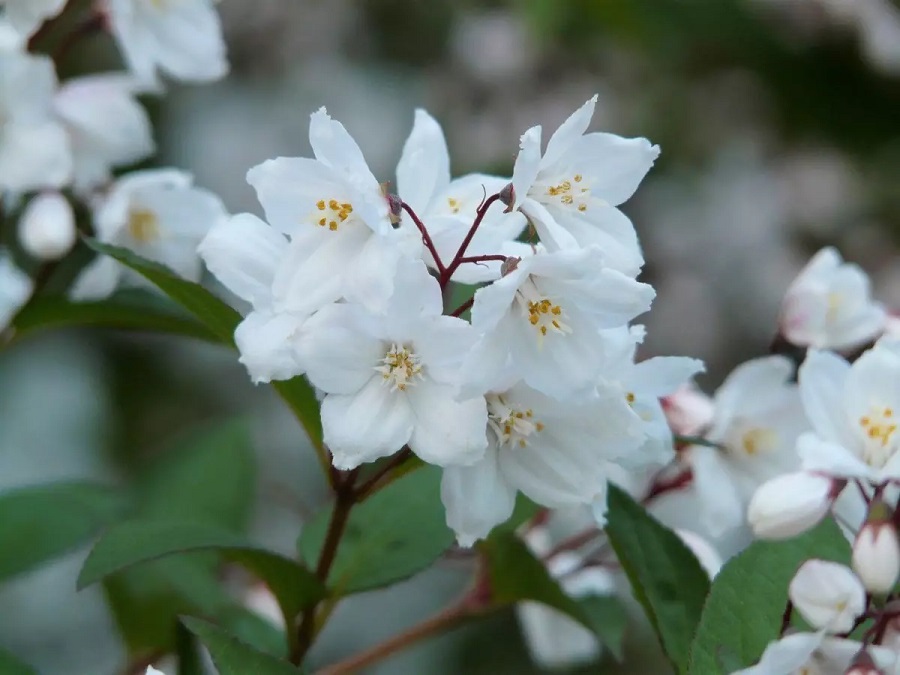
Deutzia plant – needs
Deutzia is not very demanding when it comes to its cultivation. It can grow in any type of soil, so it doesn’t matter where you plant it. The ground should be relatively moist, as the plant doesn’t tolerate long droughts.
Deutzias grow best in sunny and half-shaded locations, thanks to which you can expect rich blooming. If the plant is exposed to intense sunlight, remember about frequent watering. It concerns mostly younger plants, as even a few days of drought is dangerous to them.
Deutzia is resistant to low temperatures, which is a big advantage. Younger shrubs require mulching and protection from frosts, but as they get older, they can manage perfectly well on their own.
Does deutzia require fertilizing?
Deutzias are quite independent plants which don’t have many special needs. Thanks to this, you don’t need to feed the plant regularly. Nonetheless, experienced gardeners stress that because of the plant’s rapid growth rate, it’s good to feed the shrub once every 2 years using large quantities of natural fertilizers. Manure is a good option, in this case.
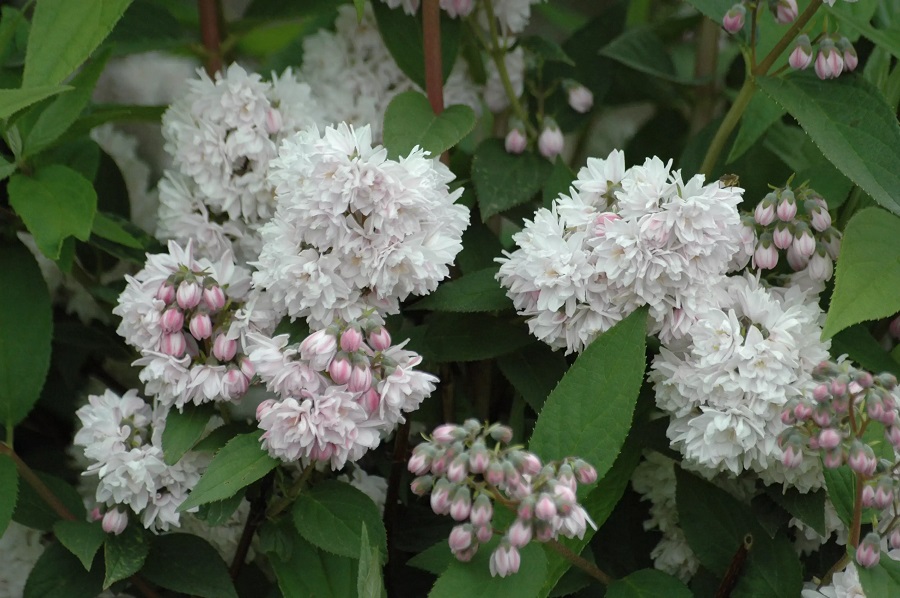
Deutzia – noteworthy varieties
There are two most common species of deutzia. First, larger type is called fuzzy deutzia. One can find a few interesting cultivars within this type. Here are the most popular ones:
- Deutzia ‘Pride of Rochester’ – characterized by delicate purple flowers,
- Deutzia ‘Plena’ – with light pink flowers,
- Deutzia ‘Candidissima’ – with white and very impressive flowers.
Slender deutzia is a smaller species, which is perfect for small gardens. Within this variety, the following cultivars are the most popular:
- Deutzia ‘Aurea’ – with characteristic leaves of a golden shine,
- Deutzia ‘Nikko’ – the smallest of the garden varieties,
- Deurzia ‘Variegata’ – the leaves of this cultivar have light edges.
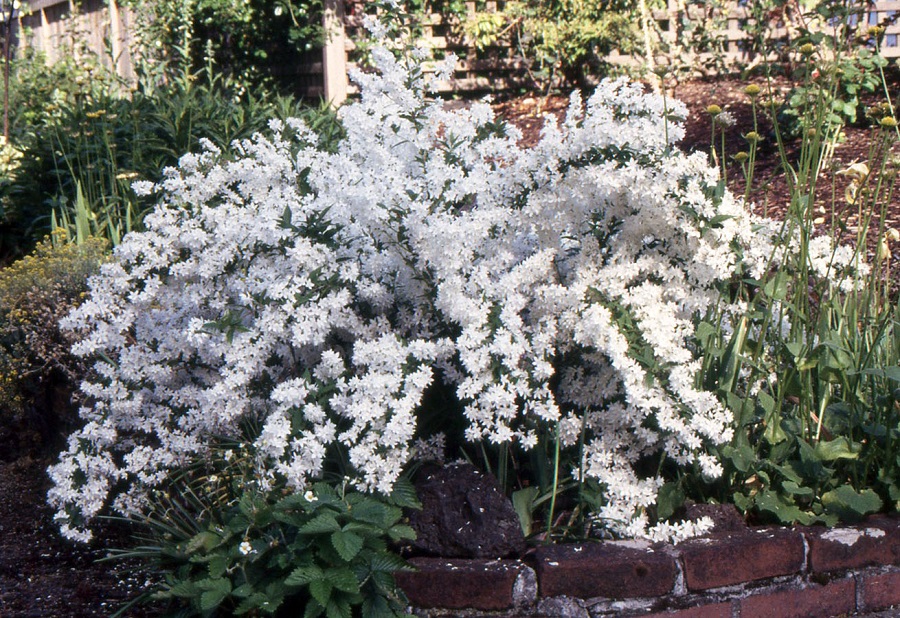
What plants does deutzia look good with?
Deutzia is a perfect standalone garden decoration, especially considering that most varieties grow lushly, achieving a few meters in height and width. Because of this, only shade-loving plants can be placed next to such shrubs, as any other species won’t find proper growing conditions there.
Smaller varieties of slender deutzia which grow no taller than 50-100 cm make a perfect background for flowerbeds. They can be beautifully combined with perennial flowers – especially those that bloom in intense colors – blue, purple, and pink.
Does deutzia need pruning?
Deutzia requires regular pruning, thanks to which the shrub can grow better and take a particular shape. The first years after planting are crucial. That’s when young shoots should be trimmed at the spot of the first node. It’s important that the plant is pruned after it finishes blooming.
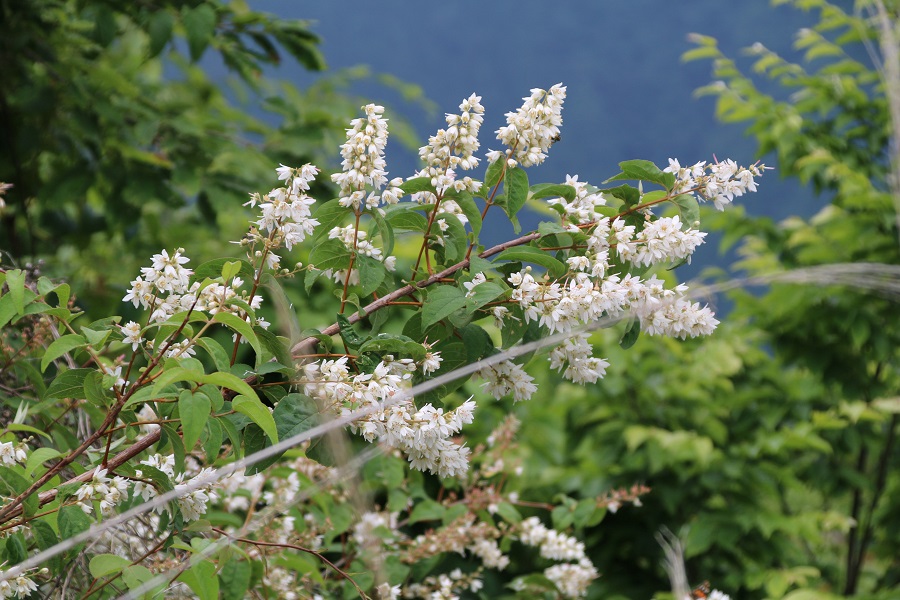
Deutzia – how to propagate the plant?
Deutzia is an easy shrub to propagate. Just use cuttings from the top parts of the branches. A cutting with a few leaves is the best option. The size of such a branch is also essential – it shouldn’t be shorter than 5 centimeters. You can cut a longer one, though. Use special rooting hormone. Thanks to this, the plant can quickly take root.
What are the most common pests and diseases of deutzia plants?
Deutzia is a very durable shrub – thanks to this, it’s resistant to most diseases and pests. Aphids are the only major threat to the plant. If they appear, just use some proven pest control methods, e.g., natural sprays.
If the plant gets neglected, some diseases might develop. If it happens, the leaves might get covered with rust. What to do then? Remove the affected leaves as soon as possible and use special nutritional products to strengthen the shrub.
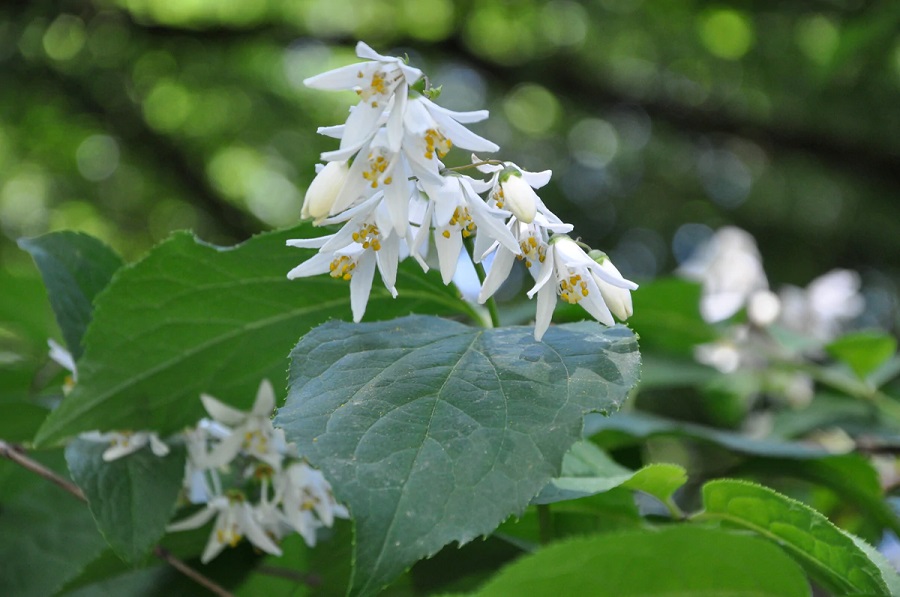
📍 What does deutzia look like?
Deutzia is an ornamental shrub. It's included in the category of medium and large bushes. Depending on the variety, it grows 100-300 cm tall. It has a characteristic, dense habit, thickly growing leaves and (usually) white flowers which develop an intense fragrance.
📍 When to plant deutzia?
Deutzia is a plant which requires planting in spring. Thanks to this, it has enough time to take root and get used to the conditions before any frosts occur. Young plants need frequent watering and mulching – at least through the first 2 years.
📍 When do deutzias bloom?
Deutzias typically bloom between May and June. Certain species bloom later, though. In this case, flowers appear at the end of June and remain through July.
📍 Why won't my deutzia bloom?
Deutzias are quite resistant to diseases and pests. If the plant doesn't bloom, it means it was exposed to frost, which might happen with young plants. In this case, the plant needs pruning and intense fertilizing, so it can regenerate.
Featured articles




